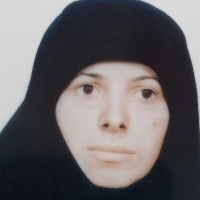Identifying and monitoring urban growth and expansion changes using spectral unmixing of remote sensing imagery and geographic information systems techniques at the micro level, (A case study of Amol city)
Land is a vital natural resource for human survival and the basis of all ecosystem services. However, land degradation through land use and land cover changes has become a serious global issue. Rural-urban migration in developing countries, along with the conversion of nearby villages into urban areas, has largely driven the rapid increase in urban settlements. Evidence shows that northern Iran has been experiencing rapid land use changes, which have endangered the region's stability over the last three decades. This article aims to identify and compare the growth and expansion changes of Amol city, located in Mazandaran province, over three decades from 1986 to 2016. Urban growth is defined by the absolute increase in the population living in cities, while urban sprawl is defined by changes in land cover over time.
To produce images of land cover changes in different years, Landsat time series image data (TM, ETM+, and OLI/TIRS sensors) were used. A linear unmixing model based on the extraction of end members was employed, identifying two classes of land: urban and non-urban. To verify the classification accuracy, high-resolution images from Google Earth and field observations using GPS were employed. Moran's spatial autocorrelation analysis tool was used to analyze the spatial distribution of land cover, and the trend analysis tool in ArcGIS software was employed to analyze the trend of spatial changes in urban land.
The findings show that the city's population doubling over these three decades has not only been accompanied by a 60% horizontal expansion into surrounding green and open lands but also increased building density and the number of floors. Validation of land cover classification, using the ambiguity error matrix, with an overall accuracy of over 90% and a kappa coefficient of over 80% for the obtained images, indicates high accuracy. Based on Moran's spatial autocorrelation analysis, the development of Amol City follows a cluster structure. Calculating the difference in land cover data over the 20 years from 1996 to 2016 revealed that 28 percent of the total city area, equivalent to 890 hectares, has undergone significant changes, including fundamental alterations in land use and land cover. The expansion of Amol City has generally occurred from the center to the periphery, with the least changes in the central parts and the most changes in the northern and eastern parts of the city.
Population growth and urban expansion not only lead to the destruction of natural resources and the environment but also exacerbate urban management problems in providing infrastructure and services. Therefore, the goal of planning should be to achieve optimal development that prevents increased migration from villages to cities. This can be achieved both at the macro level, by distributing urban roles complementarily and strengthening the role of villages, and at the local level, by emphasizing the balanced distribution of the city's population and endogenous growth.
-
Evaluating the Components of a Child-Friendly City (A Case Study of Amol)
Zahra Barandeh, , Naser Aligholiadeh Firouzjaee *
Journal of SHAHR-HA, -
Measuring and comparing the ecological footprint and biological capacity of Mazandaran province townships
*,
Geography and Development Iranian Journal, -
Studying informal settlements with livability approach (Case study: Sari informal settlements)
*, Kobra Aghajani, Rahimberdi Annamoradnejad
Research and Urban Planning,



